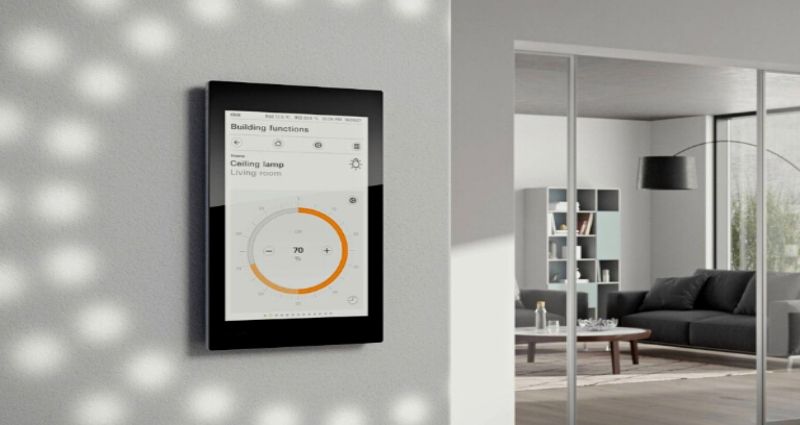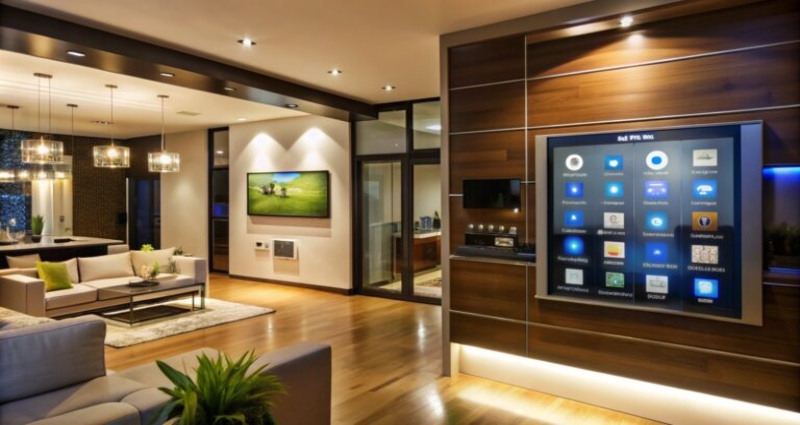Blog / Smart technologies for smart Interiors!

Wednesday, 7 Sep 2022
Smart technologies for smart Interiors!
With a growing demand for comfort and style in today’s world, design adds a kitty full of options with a variety of Interior trends that creates positivity and calmness through its functionality and appeal.
Interior design is all about enhancing beauty and utilizing the effective use of space through aesthetic and minimalistic design for the user’s comfort. The interior design initially began along with the process of building an artistic style for an interior space. As time flew, technology grew with flying colours of its remarkable innovations in every field, and so does it have in interior design too.

Interior spaces can be well designed through smart technology like AI (Artificial Intelligence). Artificial intelligence plays a powerful tool to master our interior spaces from collaborative ideation to 3d photo realistic renderings. AI-driven Lidar technology and augmented reality help us to scan through smartphones by providing a digital model of objects in our homes. Specialized thermostats and remote-controlled light switches are a few technological advancements used for smart homes.
A few other smart home products include smart locks and security cameras which help us to check and provide access to our home at any time. Smart speakers on the other hand allow giving us voice commands to play music, set reminders, make calls, set alarms as well as shop remotely. Advancement in the integration is virtual reality and augmented reality. VR and AR provide it’s the user’s a clear perception of a product’s real-world dimensions.

Smart sensors/ heat sensors which are available in different designs can save our life in the time of an accident and helps us by sending notifications to the phone and calling emergency services.
Lighting also falls under the list of interior design. Lights are generally used to make the space, bright. Technology also provides an option to control the auto lighting through its intensity, colour and brightness according to the mood.
Smart clocks are designed in both analogue and digital patterns to provide an appeal to our walls and fit according to our interior spaces.
Floor Designs create a catchy look through its floor paints, wooden tiles and printed floor carpets.
3D Paintings:
The interior world also adds 3D paintings to its creative hat. This technology generally gives a personal touch to the wall by designing the space with our personalized artworks and changes our perception of wall art forever.
Thus, with many such upcoming innovative technologies in the field of home and interior design, the evolution of interior design, catalyzed by smart technologies like Artificial Intelligence (AI), has transformed the way spaces are conceptualized and visualized. Through collaborative ideation and 3D renderings facilitated by AI, interior design has embraced a new era of creativity and efficiency.
Technologies such as Lidar, augmented reality (AR), and smart sensors enhance safety, convenience, and functionality within spaces. Customizable lighting, smart clocks, and 3D paintings contribute to the personalization and ambiance of interiors. As these innovations continue to shape the field, pursuing an Interior Design Course can equip professionals with the skills and knowledge to navigate this dynamic landscape, ensuring enjoyable and cozy living experiences with just a click.
Conclusion
The evolution of interior design, spurred by smart technologies like AI, has transformed spaces into havens of comfort and style. From AI-driven tools facilitating collaborative ideation to innovations like smart sensors and personalized 3D paintings, design has embraced efficiency, convenience, and ambiance. Pursuing an Interior Design Course enables professionals to navigate this dynamic landscape, ensuring they create spaces that harmonize functionality and aesthetics in today’s technologically driven world.
Frequently Asked Questions

Corporate Headquarters
No. 25, Dr. Radhakrishnan Salai, Mylapore,
Chennai - 600 004, Tamil Nadu, India.
+91 98843 85048
Flagship Events
Trending Courses
Fashion Design
Interior Design




